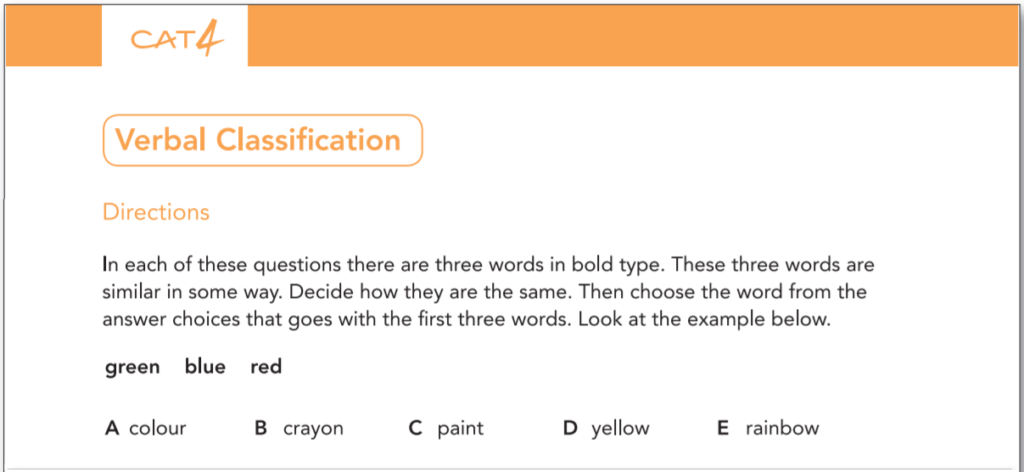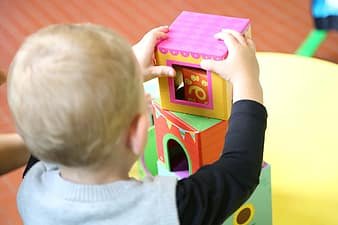What Parents should know about a CAT Test
Many secondary schools use a CAT test (Cognitive Abilities Tests) as an entrance exam. The CAT tests measure aptitude and general intelligence to help understand how well a student can learn – in particular they are designed to test three different areas: verbal skills; quantitative (number) skills, and non-verbal thinking or in others words thinking in shapes and space.
CAT tests are really tricky and parents have very little experience of helping there child to revise. A CAT test is based fundamentally on some basic skills which are further more foundationally built on the very building blocks of thinking – speed of thought, attention, problem solving, and memory. Most CAT test provides will claim that you can’t really revise for cognitive tests which is possibly accurate to some degree, but there is definitely value in familiarising a child with the format, approach and even techniques to answer the questions. This in itself is a way of developing the child’s cognitive ability.
What’s the difference between SATs and CATs
Many secondary schools use CAT Tests since they believe that even if a child doesn’t have much knowledge of the subject, having the ability to learn is more important. Some secondary schools ignore SATs completely finding them a “crude method” and would rather understand more about a child’s underlying abilities.
A SAT test is focused on the actual content of the past few years and the a child’s understanding and recall of that content. If we take the example of two children;
- One who has a very supportive family and parents who are revising the topics and heavily involved in the child’s education.
- Another child whose family although stable is not involved in the child’s education with both parents working and leaving the child to their own devices.
Now, it more than likely that the first child will certainly do better in the SAT test since there has been a push to learn and understand the material. The second child on the other hand may not have learnt the material well so may not perform as well academically.
Now does this mean the first child is smarter? Or does it mean the first child simply had a better environment in which to learn “academically”? Don’t misunderstand what is being said here – a child’s cognitive abilities will also develop through learning so child one may actually also have higher cognitive abilities that child two – and due to early development of basic skills most likely does – but this is not guaranteed.
The second child although not driven or externally supported to academically excel, may actually have a high cognitive ability and potential to perform well in the future. The way to assess this is through a CAT test which will help in determining ability to learn, without focus on actually topic information, and thus the ability in the future to achieve.
The results of a CAT test rather than a SAT test can also be used to provide an insight into how a child – or group of children – learn, and modify delivery to optimize the learning material and move forward at the best pace possible.
Preparing for CAT Tests
A CAT test does not assess any particular bit of material or knowledge, so its difficult to “learn” and review material, but there is a lot of benefit in introducing the format of the questions and the delivery method. Familiarity with the format and style will help to reduce the “cognitive load” placed on the child and although there is no official assessment body it may be a good idea to run through the practice exams on this website. Click here to try one.





